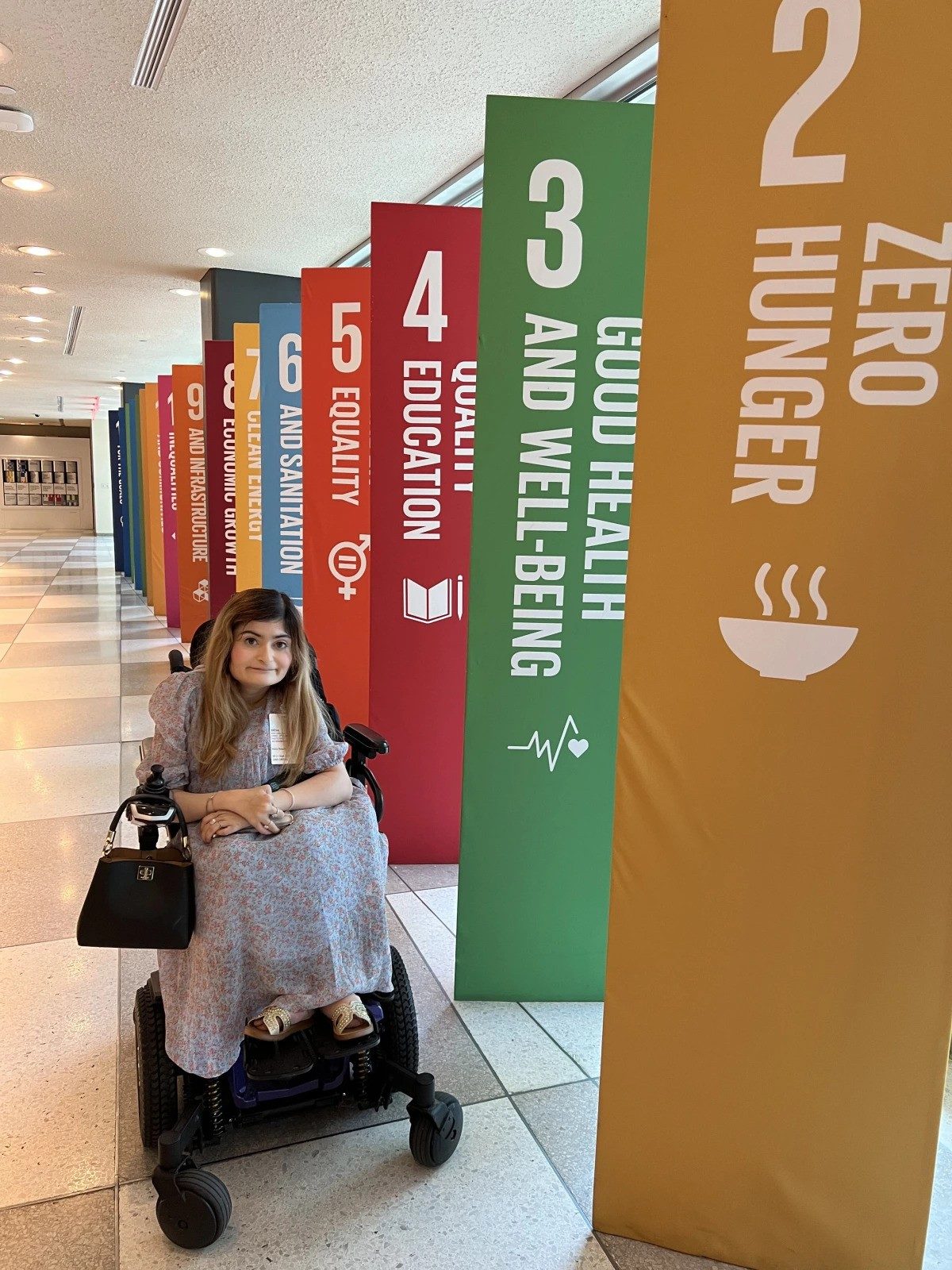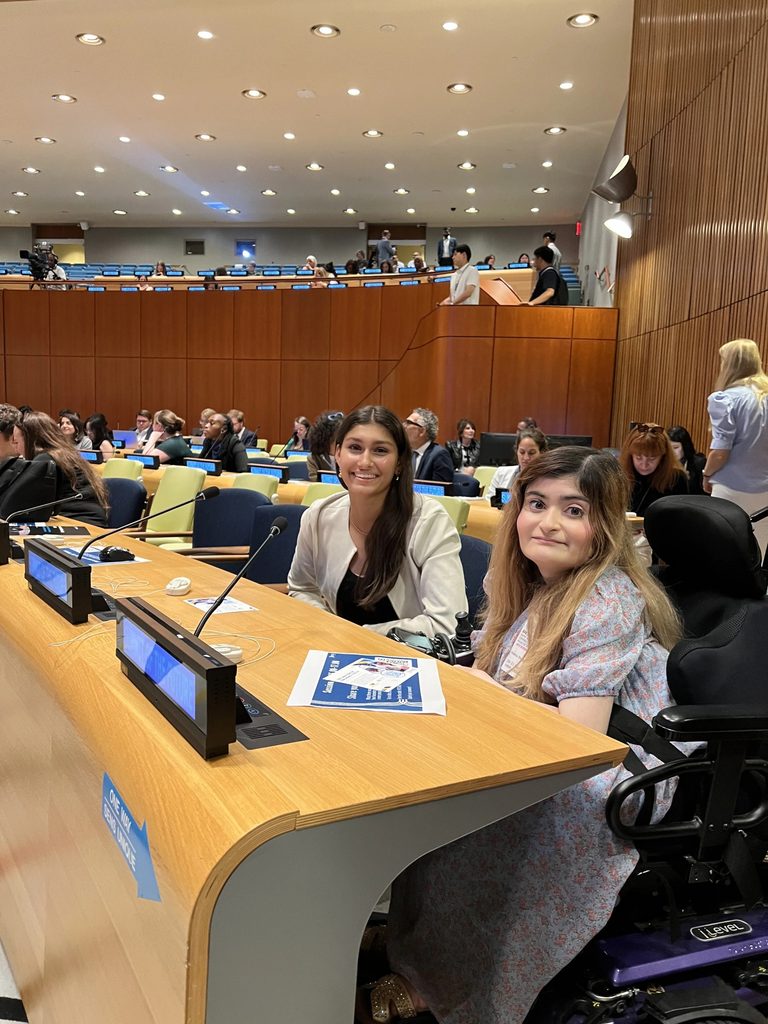Reflections from the Summit of the Future
"I was determined to ensure these issues were heard on a global stage. "
3 October 2024Young people from around the world gathered during the Summit of the Future Action Days, determined to make change. One youth advocate shares her reflections on her time.
The world has just gathered in New York for the Summit of the Future and the UN General Assembly: Heads of State, Ministers, representatives of international organizations, private sector and civil society. Young people from around the world gathered during the Summit of the Future Action Days with the vibrancy and passion symbolic of a generation so determined to make change.
Plan International had the privilege of supporting nine young activists from around the world to travel to New York to engage with power holders and represent their peers during the four days of the Summit and its Action Days. They spoke about the Girls’ Pact for the Future – their priorities for the Summit, and advocated for Member States to commit to and implement the 8 Transformative Actions for Adolescent Girls and Young People.


One of those young people is Marya, a 24-year-old from Canada. Marya is a passionate advocate for the full inclusion of persons with disabilities, and experienced firsthand the urgent need to push for spaces where all people can participate meaningfully. Kathleen Sherwin, Chief Strategy and Engagement Officer at Plan International, spoke with Marya about her reflections on her time at the Summit of the Future.
Kathleen: Marya, can you tell us a bit about your journey to the Summit?
Marya: The trip started off with a few bumps—my wheelchair was damaged during the flight, and many accessible taxi drivers weren’t trained in handling motorized wheelchairs like mine. While these challenges were frustrating, they only heightened my resolve to be at the Summit. They underscored the very barriers people with disabilities face daily, and I was determined to ensure these issues were heard on a global stage.

Kathleen: What were some of the key moments for you at the Summit?
Marya: At Plan International’s side event, “The Future Girls Want,” I had the honor of speaking on an intergenerational panel with leaders like Deputy Secretary Maldonado of Guatemala and UNICEF’s Lauren Rumble. I spoke on the need for more accessible pathways for marginalized youth and emphasized that young people should be co-creators, not just participants, in decision-making.
One of the most powerful moments at the Summit was attending “A Peaceful Future for All”, where Giles Duley, the UN Global Advocate for Persons with Disabilities in Conflict and Peacebuilding Situations, spoke. As a triple-amputee who turned personal tragedy into advocacy, seeing him lead a global conversation on peace and protection deeply resonated with me. Giles’ presence reminded me that despite the obstacles we face, we have the power to influence change and inspire others to push for accessibility and inclusion at every level.

Kathleen: What were your reflections on your engagement at the Summit?
Marya: While the Summit provided a powerful platform for advocacy, it also highlighted the ongoing struggles faced by people with disabilities—myself included. Many youth side events were not fully wheelchair accessible, making participation challenging. I found myself separated from my cohort multiple times due to physical barriers, a stark reminder of how often we are sidelined, even in inclusive global forums. These challenges underscore the need for youth with disabilities in these conversations. If we aren’t in the room—or if the room itself isn’t accessible—then the future we’re building is inherently incomplete.
Despite these obstacles, I left the Summit feeling hopeful. While there’s much work to be done for truly inclusive spaces, my experience reaffirmed that change is possible and that we need youth, especially those with disabilities, leading this movement. Ultimately, my time at the United Nations wasn’t just about speaking truth to power; it was a call to action. Accessibility isn’t just a box to tick—it’s the foundation for true inclusion. And as we continue to push for a more just and equitable future, with the Pact for the Future, I know that the only way forward is to ensure that everyone, regardless of their ability, has a seat at the table.
—
The UN – and indeed the world – has come far in its efforts to bring young people into the decision-making room. At the same time, Marya’s experience shows us that the global decision-making ecosystem is characterized by tokenism, a lack of inclusion and shrinking civic space, and power holders too often shy away from doing the hard work it takes to truly engage youth meaningfully.
In order for decision-makers to promote meaningful youth engagement in global settings, they must:
- Involve youth at all stages of policy development, not just in consultation at the end or as speakers at events
- Make all decision-making spaces accessible, ensuring that information is provided in a way that persons of all abilities and backgrounds can understand and engage with
- Support youth-led groups through flexible funding
Categories: Youth empowerment


